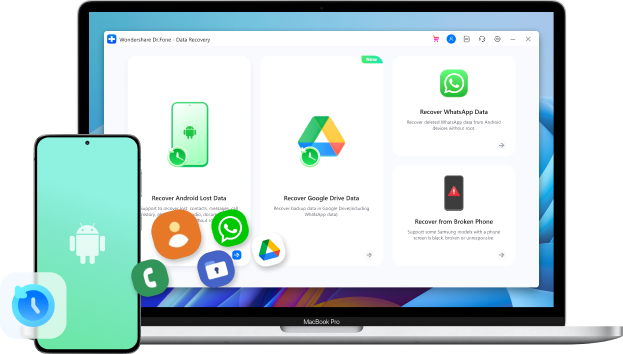
How to Recover Samsung Data from Dead Phone
Aug 27, 2025 • Filed to: Data Recovery Solutions • Proven solutions
Samsung is known for producing durable Android smartphones, but hardware failures or physical damage can still render a device completely unresponsive. If your Samsung phone won’t turn on or respond, your top priority should be to recover data from the dead Samsung phone before attempting repairs or replacements.
While it may seem difficult, there are reliable methods to recover data from the dead Samsung phone. This guide will walk you through proven recovery options to help you retrieve essential files and prevent permanent data loss.
- Part 1: Recover Data From a Dead Samsung Phone Using a Professional Recovery Tool
- Part 2: Recover Data from a Dead Samsung Phone Using Find My Mobile
- Part 3: Tips to Avoid Unexpected Damage to Your Samsung Device
Part 1: Recover Data From a Dead Samsung Phone Using a Professional Recovery Tool
One of the most reliable ways to recover data from the dead Samsung phone is by using a professional tool like Dr.Fone - Data Recovery (Android). This powerful software is designed specifically for Android devices and supports recovery of various file types, including photos, videos, documents, contacts, and even call logs.
Dr.Fone - Data Recovery (Android) offers one of the highest success rates to recover data from the dead Samsung phone. It performs a deep scan of both internal and external storage to retrieve lost files with ease. One standout feature is the file preview option, allowing you to view and select specific data—such as photos, documents, and messages—before recovery.
Dr.Fone - Data Recovery (Android)
World's 1st data retrieval software for broken Android devices.
- It can also be used to recover data from broken devices or devices that are damaged in any other way such as those stuck in a reboot loop.
- Highest retrieval rate in the industry.
- Recover photos, videos, contacts, messages, call logs, and more.
- Compatible with Samsung Galaxy devices.
So, here’s the detailed step-by-step process to recover data from your dead Samsung phone.
Step 1 - Install and launch Dr.Fone - Data Recovery(Android) on your PC. Then, connect your broken device to the computer via USB and select “Data Recovery”.
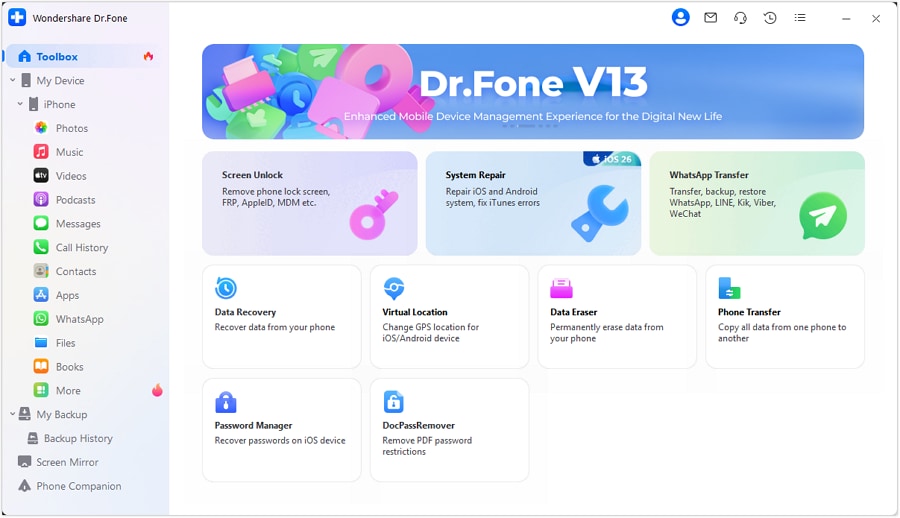
Step 2 - Select Function For Recovery. Once a new screen appears on the front, continue to select Recover Android Data from the available list.
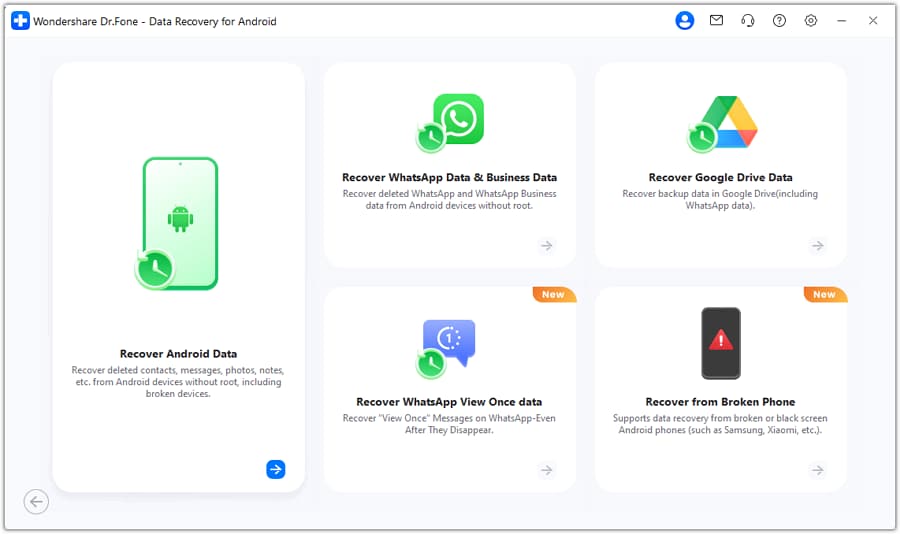
Step 3 - Connect Android Device. You will be prompted to connect the Android device to recover data from it. Connect it with a USB cable and let the platform detect it.

Step 4 - Select File Types. When redirected to a new screen, select all the file types you want to recover from Android. Continue by clicking Start Scan on the bottom-right of the screen.
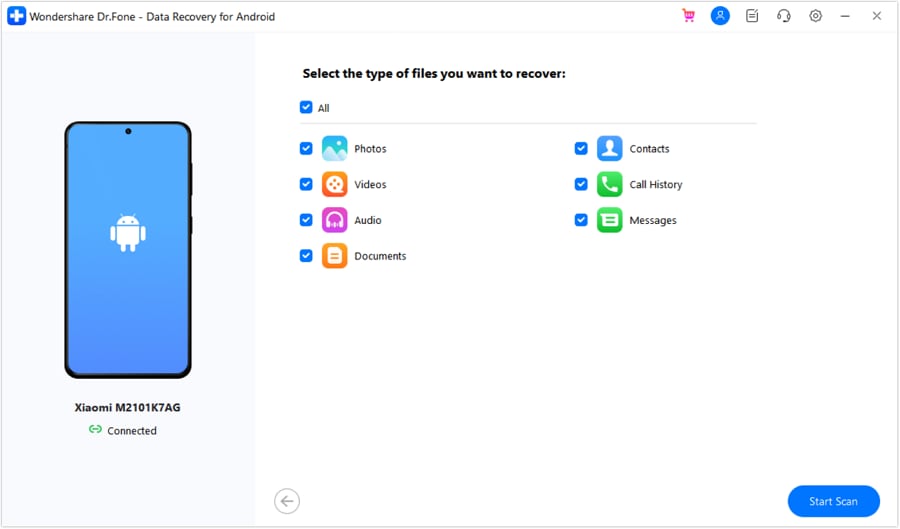
Step 5 - Confirm Recovered Android Data. Once the device appears on the screen, you can select and view all available data.
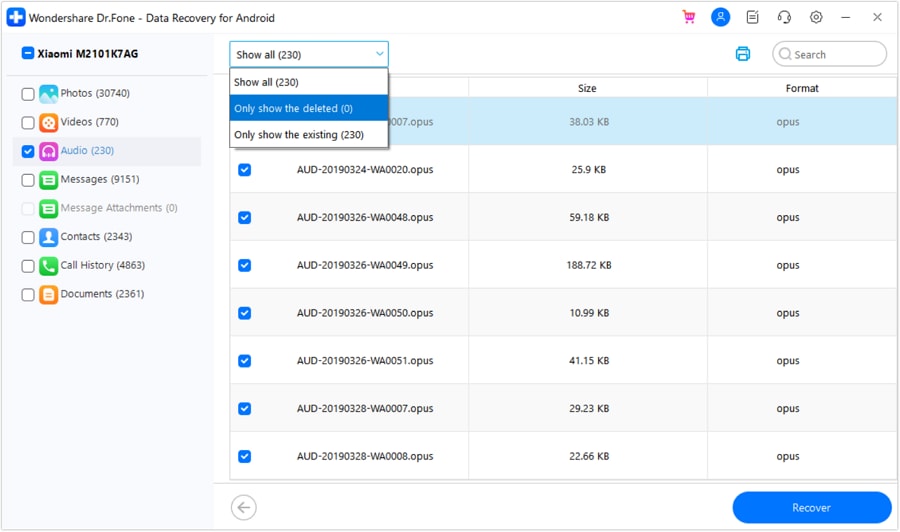
Step 6 - Recover Data To Computer. If you wish to recover data from Android, click the Recover button on the bottom right after selecting all appropriate file types. Continue to set the location of the recovered data and click Recover on the pop-up to execute the process.
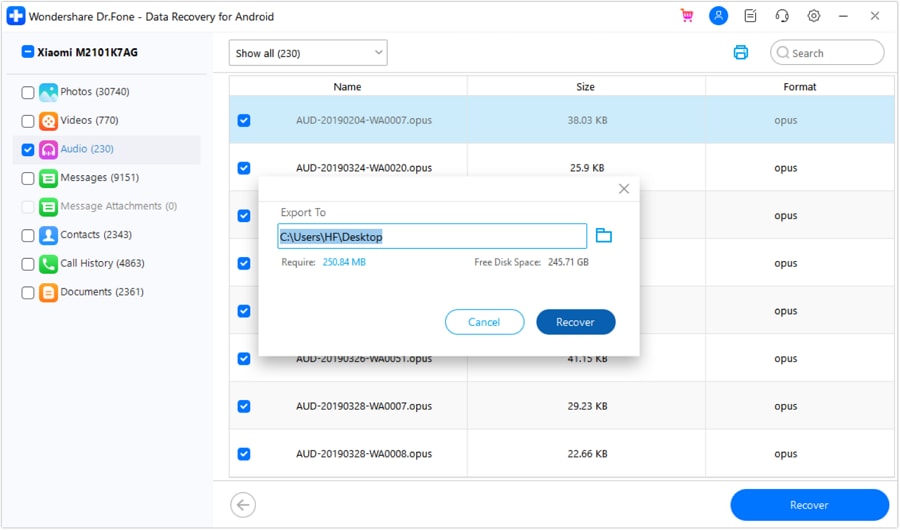
Part 2: Recover Data from a Dead Samsung Phone Using Find My Mobile
Another effective method to recover data from the dead Samsung phone is by using Samsung’s official Find My Mobile tool. Pre-installed on most modern Samsung devices, this utility is primarily for locating lost or stolen phones—but it also allows you to remotely back up data to Samsung Cloud.
While Find My Mobile is useful to recover data from the dead Samsung phone, it only works if the device is powered on and connected to the internet. Additionally, this method requires that Find My Mobile was enabled on your Samsung account before the phone became unresponsive.
So, if you meet the above criteria, here’s the process to recover data from a dead Samsung S6 or other model using Find My Mobile.
Step 1 - Go to Find My Mobile’s official website and sign-in with your Samsung account credentials.

Step 2 - Once you’re logged in, tap “Back-Up” from the right-side of the screen.

Step 3 - Now, select the files that you want to get back and click “Backup” to create a backup on the cloud.
This process may take a while depending on the network speed and overall size of the data. Once the process completes, all you have to do is log-in to your Samsung’s Cloud and download files from the backup.
Part 3: Tips to Avoid Unexpected Damage to Your Samsung Device
Now that you know how to recover data from a dead Samsung phone using different methods, let’s take a look at a few safety measures to avoid unexpected damages to your smartphone. The following tips will ensure that your device doesn’t become unresponsive due to any factors.
- Always make sure to update your device to the latest firmware package. Outdated OS usually has many bugs that can make your device run into different technical errors.
- Avoid leaving your phone plugged-in to the charger for longer durations
- Never install applications from untrusted sources
- Install a premium antivirus software on your smartphone to save it from potential malware
- Make it a habit to back up your data to the cloud regularly
Conclusion
Losing access to your Samsung phone doesn’t mean your data is gone forever. With the right tools and techniques, it’s entirely possible to retrieve valuable files from a dead or unresponsive device. Among the available solutions, Dr.Fone - Data Recovery (Android) stands out as one of the most reliable options, thanks to its high recovery rate, support for various file types, and user-friendly interface.
Samsung Recover
- Recover from Broken Samsung
- Samsung Contacts Recover
- Samsung Data Recover
- 1. Recover Data from Dead Phone
- 2. Recover Data from Internal Memory
- 3. Top 9 Data Recovery Apps
- 4. Recover Data from Samsung J7
- 5. Recover Data From Samsung S22
- 6. Recover Data on Samsung Galaxy S7
- 7. Recover SMS from Samsung S8
- 8. Retrieve WhatsApp Messages
- Samsung Messages Recover
- 1. Recover Messages from Samsung
- 2. Recover Messages on Samsung S6
- 3. Recover Messages on Samsung S7
- Samsung Photos Recover
- Samsung Recover Tips
- 1. Recover Lost Data from Samsung
- 2. Recover File on Samsung
- 3. Samsung Password Recovery
- 4. Use Samsung Recovery Mode
- 5. Top 5 Samsung Recovery Tools
- 6. Recover Data from SD Card
- 7. Recover Files from Samsung
- Samsung Useful Tricks
- 1. Fix Samsung Brick
- 2. Flash Samsung with Odin
- 3. Remove Google Account Bypass
- 4. Factory Reset Samsung Galaxy
- 5. Samsung Root Software
- 6. Transfer Files from Samsung to PC
- 7. Best Samsung Kies Alternatives
- 8. Samsung Smart Switch Solutions
- 9. Bypass Lock Screen Pattern
- 10. 2 Ways to Unlock Samsung
- 11. Transfer Whatsapp Messages
- 12. Samsung Auto Backup
- ● Manage/transfer/recover data
- ● Unlock screen/activate/FRP lock
- ● Fix most iOS and Android issues
- Manage Now Manage Now Manage Now

















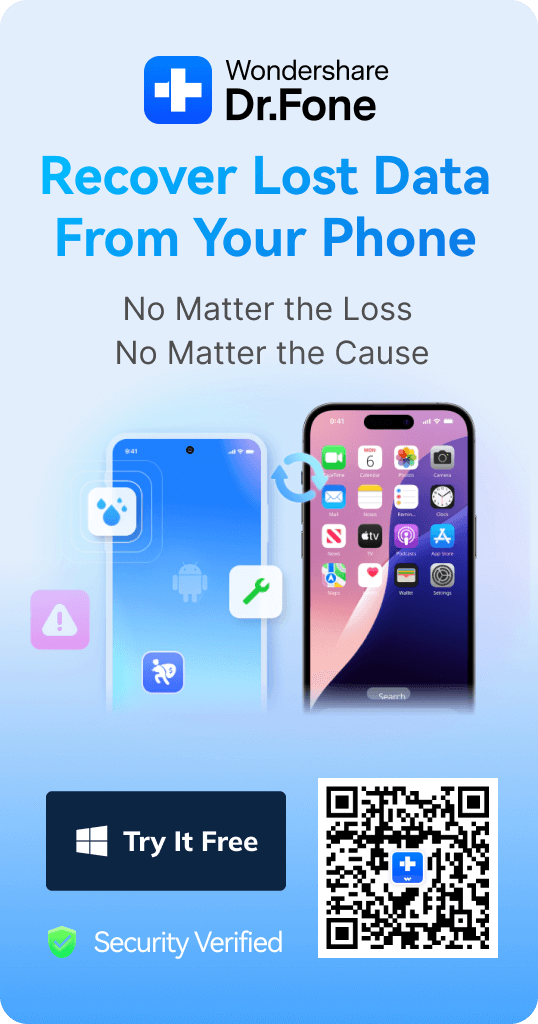

Alice MJ
staff Editor